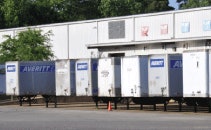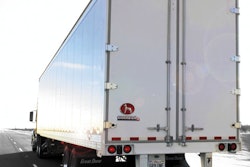Two upsides to getting your authority are the potential to make more money than a leased-operator and the almost complete freedom with how you run the business. This may sound wonderful, but with freedom comes risk and responsibility.
I’ve talked thousands of owner-operators out of getting their own authority because most were unprepared for that level of responsibility. The preparation starts with deciding where you’ll get your freight, since that will no longer be a matter of calling dispatch. You’ll have to locate your own customers or work through load boards and brokers.
FIND YOUR OWN CUSTOMERS
Soliciting freight from shippers can be a daunting task for an individual, but it results in the highest freight rate. There is no middleman to take a cut.
There are several ways to find the small, local shippers you’re aiming for. You can buy business directories online or attend local business functions, such as chamber of commerce events. The easiest way is to drive around industrial parks and take notes.
 One quick way to find potential shippers is to drive around industrial parks and note the names of manufacturers with loading docks.
One quick way to find potential shippers is to drive around industrial parks and note the names of manufacturers with loading docks.List 25 to 50 potential customers, then schedule two weeks off the road to contact the shipping managers unless you have a spouse or other partner who can handle this. Be ready to hear “no” many times. If you generate just one customer, consider it a success.
As a one-man show, you may find this task awfully time-consuming and difficult. If you’ve never worked in sales, prepare yourself. For example, you can listen to any of the many audiobooks on sales and negotiation.
GET HELP IN FINDING CUSTOMERS
If personal solicitation sounds too overwhelming, consider other options:
• Hire a freight broker to work as your direct sales agent.
• Find a business partner with experience in freight sales. If you choose to follow this path, you’ll also need your broker authority in order to move enough freight to support both partners.
If you decide not to acquire your own customers, you’ll need a plan for working with brokers or using load boards. Don’t make the mistake of randomly looking for freight every time you need to load. In the beginning, focus on a couple of lanes, areas, or even triangles of freight. Consider fuel prices in those lanes, weather, traffic, road conditions and, of course, freight rates and availability.
Research load boards daily to see what is available in the areas that you are interested in. You’ll get an idea of types of freight, average rates and which brokers have the freight.
Once satisfied with an area or lanes, contact brokers that control that freight and explain what you have to offer. Your goal is to create a strong working relationship and provide outstanding customer service.
Once your business model is established, you’ll be ready to jump through the administrative and regulatory hoops for going independent: applying for operating authority, managing compliance, licensing, permitting and more. I’ll cover that next month.










